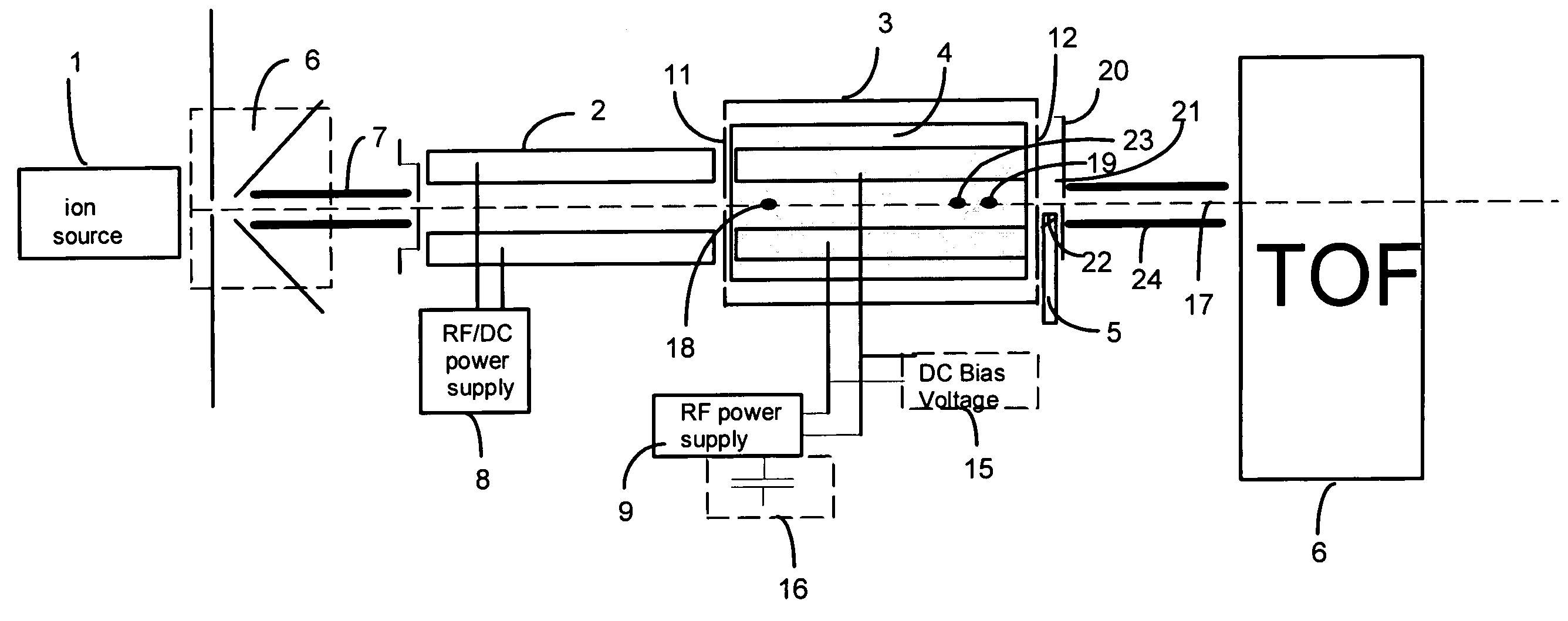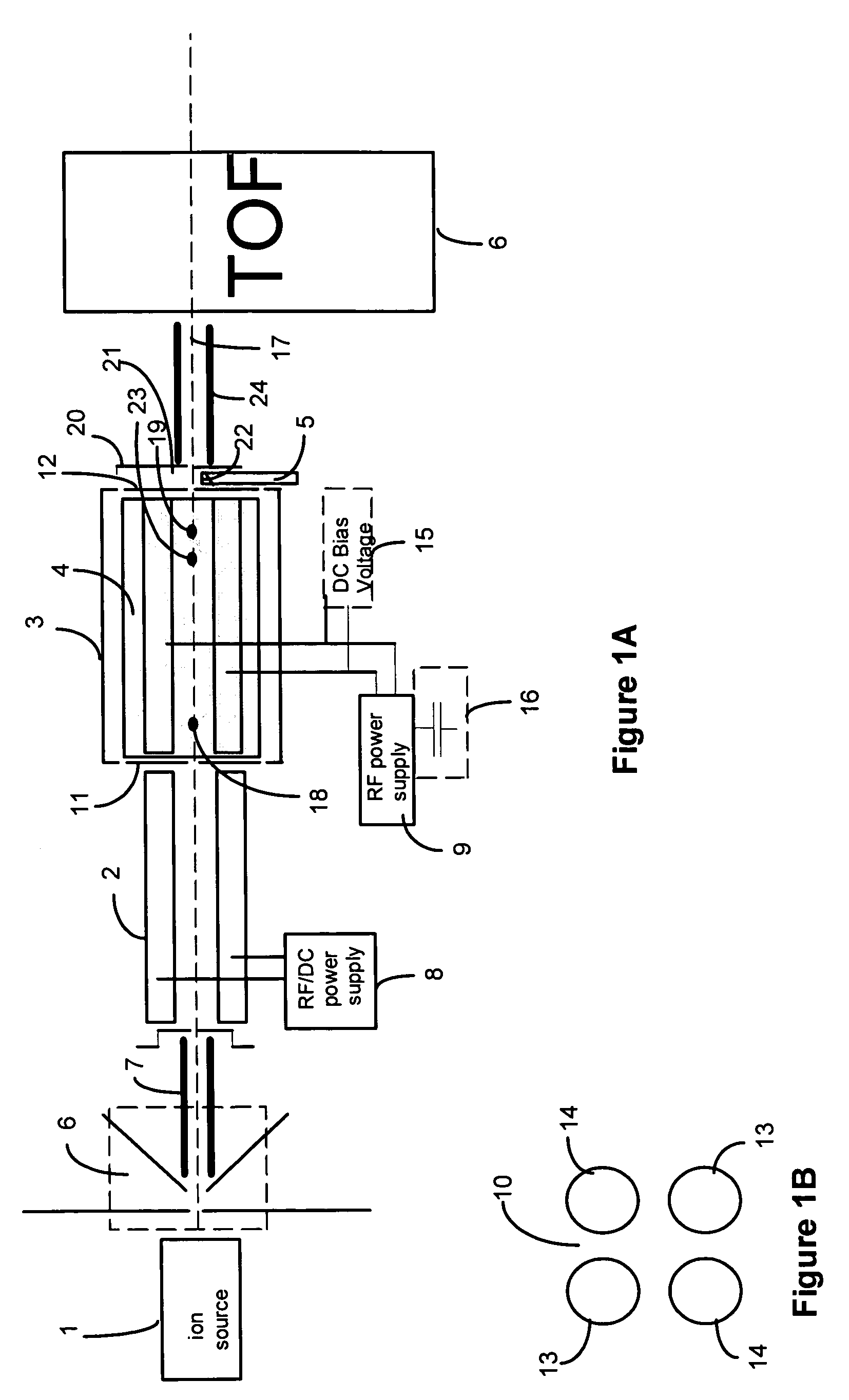Fragmentation methods for mass spectrometry
a mass spectrometry and fragmentation method technology, applied in the field of mass spectrometry, can solve the problems of insignificant relative probability of dissociation of precursor ions by cleavage at many of their bond sites, difficult to obtain specific structural information with maldi, etc., and achieve the effect of enhancing the overlap of electrons
- Summary
- Abstract
- Description
- Claims
- Application Information
AI Technical Summary
Benefits of technology
Problems solved by technology
Method used
Image
Examples
Embodiment Construction
[0078]One embodiment of the present invention is illustrated in FIG. 1A. Ions are produced in atmospheric pressure ion (API) source 1, and are transported through: various vacuum stages 6 of decreasing pressure; RF multipole ion guide 7; RF / DC quadrupole mass filter 2; RF multipole collision cell 3 containing target gas 4; RF multipole ion guide 24; and TOF m / z analyzer 6. Mass filter 2 is driven by RF / DC power supply 8. A set of ions of one particular m / z is selected and transmitted into RF multipole collision cell 3, typically held at an elevated pressure with respect to mass filter 2. RF multipole collision cell 3 is powered by an RF power supply 9 that provides oscillating voltage to the pairs of electrodes. For example, RF multipole collision cell 3 may comprise a quadrupole rod set 10 containing four cylindrical electrodes with rounded surfaces, illustrated in FIG. 1B. Rod set 10 is electrically configured such that the electrodes positioned 180 degrees are electrically connec...
PUM
 Login to View More
Login to View More Abstract
Description
Claims
Application Information
 Login to View More
Login to View More - R&D
- Intellectual Property
- Life Sciences
- Materials
- Tech Scout
- Unparalleled Data Quality
- Higher Quality Content
- 60% Fewer Hallucinations
Browse by: Latest US Patents, China's latest patents, Technical Efficacy Thesaurus, Application Domain, Technology Topic, Popular Technical Reports.
© 2025 PatSnap. All rights reserved.Legal|Privacy policy|Modern Slavery Act Transparency Statement|Sitemap|About US| Contact US: help@patsnap.com



